wrestling / Columns
The Magnificent Seven: The 7 Most Important American Wrestling Businessmen of the Last Decade
We wrestling columnists like to discuss the biggest stars of recent eras, and get into quarrels about the relative impact of major stars who have hung around (The Undertaker, Triple H), guys who have had sustained runs on top (John Cena), and guys who have been on the rise (Daniel Bryan).
This week, I’m taking a look behind the scenes—the guys who have booked, strategized, innovated, and otherwise moved the wrestling business independent of their work on camera. I’m counting down the most important American wrestling businessmen of the last decade.
Note: This article is framed as recognizing businessmen. It was not my intention to be sexist, but rather to make this countdown a little easier on myself. Rest assured, were the countdown to consider men and women, then Stephanie McMahon and Dixie Carter would have demanded attention.

#7. Mike Quackenbush
Folks like to talk about how WWE killed the territories, but I think it would be more accurate to say that they forced the reinvention of the territory model. Gone are the days when different promotions have different regions of the country as their turf—geographic borders in which they’re the only ones promoting wrestling shows. But could this model have realistically survived cable television, much less the Internet—innovations that meant more people were watching more of the same broadcasts, regardless of where they lived? The territory system depended on rotating casts, in which performers reinvented themselves or benefited from renewed heat after time away—in an era when just about everyone aims to broadcast nationally or internationally, and so much of wrestling is accessible to the general populace via dirt sheet websites and YouTube, change was inevitable.
The small promotions that have survived and even thrived in a post-territory wrestling world, have been the ones to innovate and use the resources available to their fullest advantage. We can argue all day about which promotions have been most successful, but for the number seven spot I’m going to hone in the specifc case of Mike Quackenbush and Chikara.
In 2002, Quackenbush and Tom Carter founded The Wrestle Factory school, and within a few months rolled out the Chikara brand—an indy wrestling promotion that spotlighted their students, while also bringing in top independent talents of the day likethe would-be Cesaro and CM Punk.
In the years to follow, Chikara grew based on several factors. One was a focus on family friendly programming—gearing storylines toward young people, often through over-the-top comedy that was actually, well, funny. Furthermore, Chikara took advantage of technology, using its website and regular podcasts to keep fans informed and engaged. And then there was the booking—not only building compelling long-term storylines, but also making inspired use of big names in limited capacities. Case in point, my lone live experience Chikara was the 2012 King of Trios tournament—a three-day event that spotlighted home-grown talents, included major indy stars like Mike Bennett and the Young Bucks, and also wove in players from yesteryear like The 1-2-3 Kid, Marty Jannetty, Tito Santana, Demoloition, The Powers of Pain, and Tommy Dreamer. The result was a series of solid wrestling shows that incorporated in-ring spectacle, nostalgia, and humor in brilliant proportions.
Quackenbush is the foundation of Chikara—its founder, head booker, and sometimes an in-ring star. He carved a unique niche for himself in the wrestling world—staying small enough not to get the little company in over its head, but just the same establishing a national presence. He even devised a way for the company to take a year off in 2013, but retain fan interest and come back arguably as strong as ever through the creative Worldwide Media Development angle. In achieving success with Chikara, Quackenbush has hopefully paved the way for other small companies to continue reinventing the territories, not so much by region, but by appealing to different demographics and employing different styles.
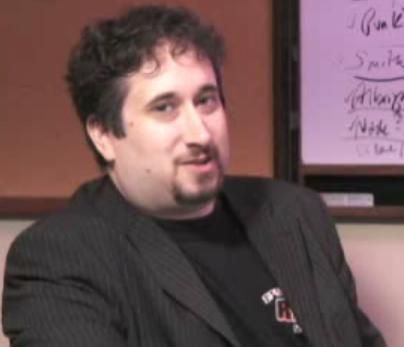
#6. Gabe Sapolsky
Gabe Sapolsky, like Mike Quackenbush, isn’t necessarily a household name among mainstream wrestling fans, but for members of the IWC, he likely carries a bit more name recognition. Sapolsky’s credits include co-founding and booking Ring of Honor, writing for Full-Impact Pro, serving as vice president for Dragon Gate USA, and co-founding Evolve Wrestling.
Sapolsky has made a career out of working behind the scenes at indies, built off of the fledgling days of his career as Paul Heyman’s protégé in the original ECW. As such, he’s taken a round-about path to becoming one of wrestling’s great behind-the-scenes power players, based on a combination of impressive booking prowess, an eye for talent, and a willingness to gamble on starting new promotions that defy mainstream American wrestling norms.
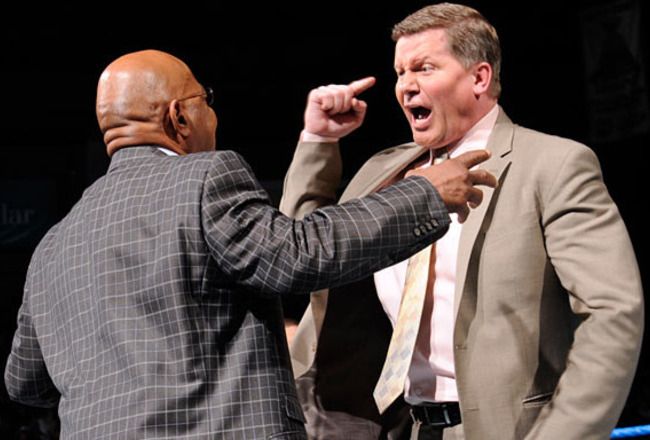
#5. John Laurinaitis
Road Warrior Animal’s little brother may seem like an unlikely candidate for wrestling’s top businessmen, but in addition to a time as a bruising Gaijin in Japan and middling run as an authority figure for WWE, Big Johnny has had an impressive run behind the scenes in the past decade, progressing from a management role in WCW and road agent spot with WWE, to positions in WWE including Vice President of Talent Relations, Senior Vice President, and Executive Vice President.
A number of folks have been critical of Laurinaitis’s work as an executive—that he had a narrow (and arguably misguided) view of which talents could become stars, and that his communication with developmental territories was unclear and problematic. At this point, it’s important to note that this countdown is not so much about wrestling’s best businessmen, as its most important figures in such roles. Laurinaitis played gate keeper and real –life general manager for the highest profile wrestling company in the world, until Triple H supplanted him in that role.
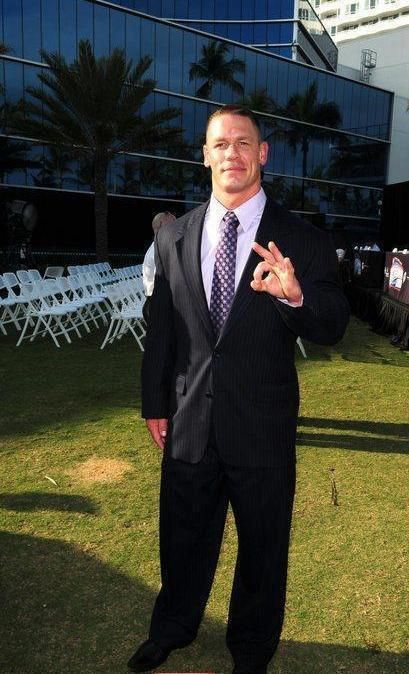
#4. John Cena
John Cena is the lone entry on this countdown who, in 2015, is inarguably more of an on-air talent than a behind the scenes businessman. That said, he is also the Hulk Hogan of his generation—not as a big of a star or as much of a draw as The Hulkster, but just the same wrestling’s most recognizable star, and a star who has arrived at a time when t-shirts, towels, wristbands, and DVDs have reached their fullest merchandising potential.
For years, the argument as to why Cena wouldn’t turn heel was that he makes WWE so much money. While CM Punk’s t-shirts may have outsold Cena’s for a brief period, in the long-run, no one in the last decade has touched Cena’s merch sales. And I dare say that he’s the only wrestler alive today who could defect and single handedly make ROH, Lucha Underground, Chikara, PWG, or any other third-string major American indy into a legit number two promotion in the US.
On top of his drawing power and sales numbers, Cena is business minded. One of the greatest reveals in his podcast interview with Steve Austin was just how focused he is on WWE and promoting the brand, for example talking about how he spends his spare time learning Mandarin so WWE can tap into the Chinese market.
WWE has gotten into the habit of rolling out legends for WrestleManias, Raw specials, and as good will ambassadors. Cena is already a top-notch representative of the company on the talk-show circuit, but just imagine how good he might be when he does retire from full-time wrestling—a legend, and one with a striking record of good behavior and loyalty who I suspect WWE will happily make use of until he calls it quits or, more likely, dies.
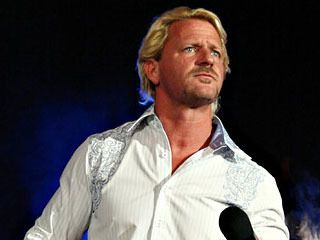
#3. Jeff Jarrett
Jeff Jarrett is an entrepreneur and a true pro wrestling lifer. He co-founded TNA with his father shortly after the WWF bought out WCW. There are ways in which this was a practical move of self-preservation—Jarrett had purportedly burned plenty of bridges on his way out of WWE, and thus couldn’t expect to work again under a national spotlight unless he created that spotlight for himself. But there was also a bold, creative spirit involved in creating a new promotion that would focus on the in-ring product and new stars. In addition, Jarrett reportedly did a lot of the legwork himself when it came to networking with investors, developing the weekly PPV strategy that gave TNA a start, and serving as the stable, in-ring face of the promotion in its early days.
As Dixie Carter took control, and as big names like Kurt Angle came in, and later on Hulk Hogan and Eric Bischoff arrived with more than their share of backstage stroke, the balance of power in TNA fundamentally shifted. Jarrett fronted the Ring Ka King experiment in India and made periodic appearances on TNA TV, but was on his way out the door.
But Jarrett would not leave the business of professional wrestling, nor settle for a diminished role at TNA, tuck tail and crawl back to WWE, or ride out the rest of his physically capable days on the indy circuit. Instead, in spring 2014, he announced the launch of Global Force Wrestling. In addition to starting a new national wrestling brand that will take flight in the months ahead, he also brokered a deal with NJPW to air their promotion in the US, in addition to forming partnerships with AAA, WWP, and a number of other promotions throughout the world. The jury is out on what this project will accomplish or how long it will last, but it furthers the point that Jarrett is an innovative, fearless businessman on the wrestling landscape, who will likely remain a force in the business for years to come.
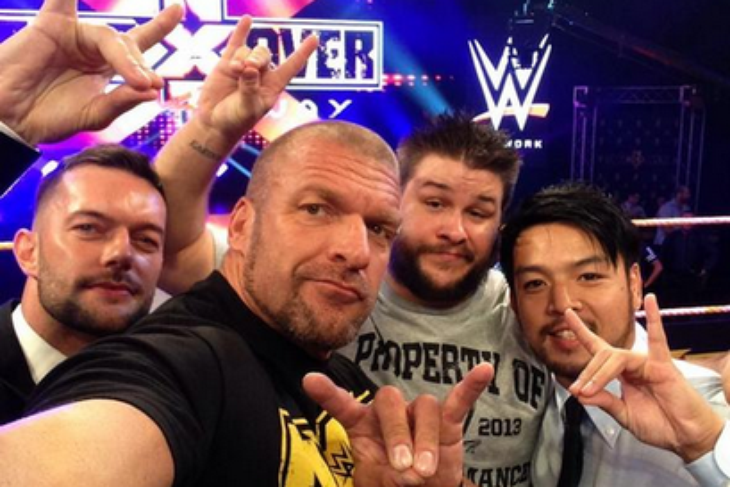
#2. Triple H
Make no mistake about it Triple H is in so many ways the now and the future of WWE—instrumental in talent relations, booking, and marketing the largest wrestling promotion in the world. He is an undeniable student of the pro wrestling game who combines historical knowledge with forward thinking. He was purportedly the key figure in brokering Bruno Sammartino’s return to the WWE fold to join the Hall of Fame. Morever, he has spearhead the ambitious NXT developmental system that has helped develop key players like Seth Rollins, Dean Ambrose and Bray Wyatt. More over, he has demonstrated an ability and willingness to think differently, recruiting established indy talents like Sami Zayn, Kevin Owens, and now Samoa Joe, beside top international stars like Finn Balor and Hideo Itami.
Triple H probably won’t fully realize his full potential as a businessman until Vince McMahon passes. In the meantime, he’s a more than worthy number two who looks prone to lead the business into the future.
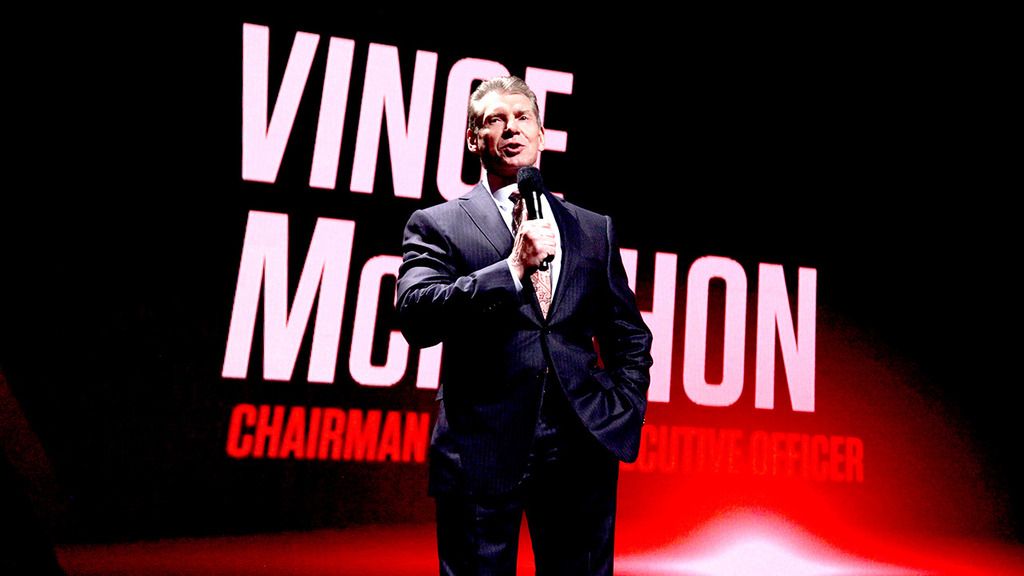
#1. Vince McMahon
There was no other choice for number one than the guy who has, since the early 1980s, run the number one wrestling promotion in the world. You can say that McMahon is out of touch. That he has relied for too long on established main event stars, that he no longer understands the desires of the fans, or that his sense of humor is juvenile. For better or worse, though, McMahon is the closest thing the US wrestling world has to a deity—an individual of unparalleled business, booking, and marketing power who has handpicked mega stars, and, in the last decade, gambled on projects like WWE Studios and the WWE Network—some flops, some moves of sheer brilliance, and some choices for which we still have to wait and see what history has to tell us.
In the unlikely case of McMahon’s retirement, or, more likely, when he passes away, his daughter and son-in-law will be waiting to take his spot and prove their mettle. In the meantime, McMahon remains the wrestling business’s all-time most successful entrepreneur, innovator, and creative mind.
What businessmen from the US wrestling would you add to the countdown? Let us know what you think in the comments section. See you in seven.
Read more from Mike Chin at miketchin.com and follow him on Twitter @miketchin.







